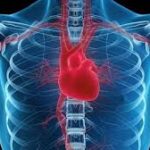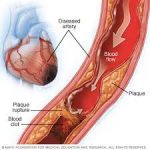 In Australia, every 10 minutes someone has a heart attack and every hour one of those heart attack sufferers lose their life. Seeing as heart attacks are so prevalent it is really important that you know how to prevent and detect heart attacks so that you can continue to live a long and healthy life. Unfortunately, heart attacks in women can present very differently. Women may not experience typical symptoms and therefore are less likely to survive from a heart attack because some do not realise that they are even having one. More than 40% of women will NOT experience chest pain. This situation has happened to a very special person in my life and she did not have any pain at all. Although I cannot change what has happened, I wanted to write this blog to bring awareness to all Australians and particularly to women.
In Australia, every 10 minutes someone has a heart attack and every hour one of those heart attack sufferers lose their life. Seeing as heart attacks are so prevalent it is really important that you know how to prevent and detect heart attacks so that you can continue to live a long and healthy life. Unfortunately, heart attacks in women can present very differently. Women may not experience typical symptoms and therefore are less likely to survive from a heart attack because some do not realise that they are even having one. More than 40% of women will NOT experience chest pain. This situation has happened to a very special person in my life and she did not have any pain at all. Although I cannot change what has happened, I wanted to write this blog to bring awareness to all Australians and particularly to women.
A heart attack (also called an acute myocardial infarction) is caused when one or many arteries that supply blood to your heart become completely blocked. Arteries in your heart can become blocked due to build up of plaque that collects over time. The plaque may dislodge and a blood clot forms around it causing a full blockage inside the artery and therefore restricting blood flow. Once this happens, the heart can no longer function correctly as the heart muscle starts to become weak and the heart tissue starts to die due to the lack of blood supply.
What can increase your risk of having a heart attack?
- As you get older your risk increases.
- Men have a higher risk than women however post menopausal women have the same risk as men.
- Ethnicity
- If someone in your family has had heart disease then you are at a higher risk.
- Smoking
- high cholesterol
- high blood pressure
- diabetes
- being overweight
- being inactive
- eating an unhealthy diet
- depression
How do I know how much fat I am storing internally?
The amount of fat you carry around your waist can indicate the amount of internal fat deposits in and around your organs. Your risk of heart disease is increased if you have a waist measurement of more than 94cm for men and 80cm for women.
Please take the time to measure your waist by placing your tape measure on your stomach half way between your last rib and the top of your hip bones. If you are pregnant please don’t measure your waist until after you have given birth.
What are the symptoms of having a heart attack?
Pain, discomfort or burning in any of the following areas:
- chest
- Jaw
- Neck
- Shoulder
- Back
- Arms
You may not have any pain or discomfort but you may feel
- Nausea
- Dizziness
- Cold sweat
- Shortness of breath
If you experience any of these symptoms please seek urgent medical attention. Time is the most important factor in surviving a heart attack so even if you are unsure, please seek medical attention. If you are feeling generally unwell however do not have the above symptoms, please see a doctor so that you can get checked out anyway.
This blo g is dedicated to Lynette Victoria Esposito, my beautiful mother and loyal client of PMPP.
g is dedicated to Lynette Victoria Esposito, my beautiful mother and loyal client of PMPP.
~Julia Esposito
References:


